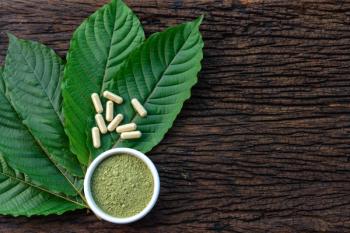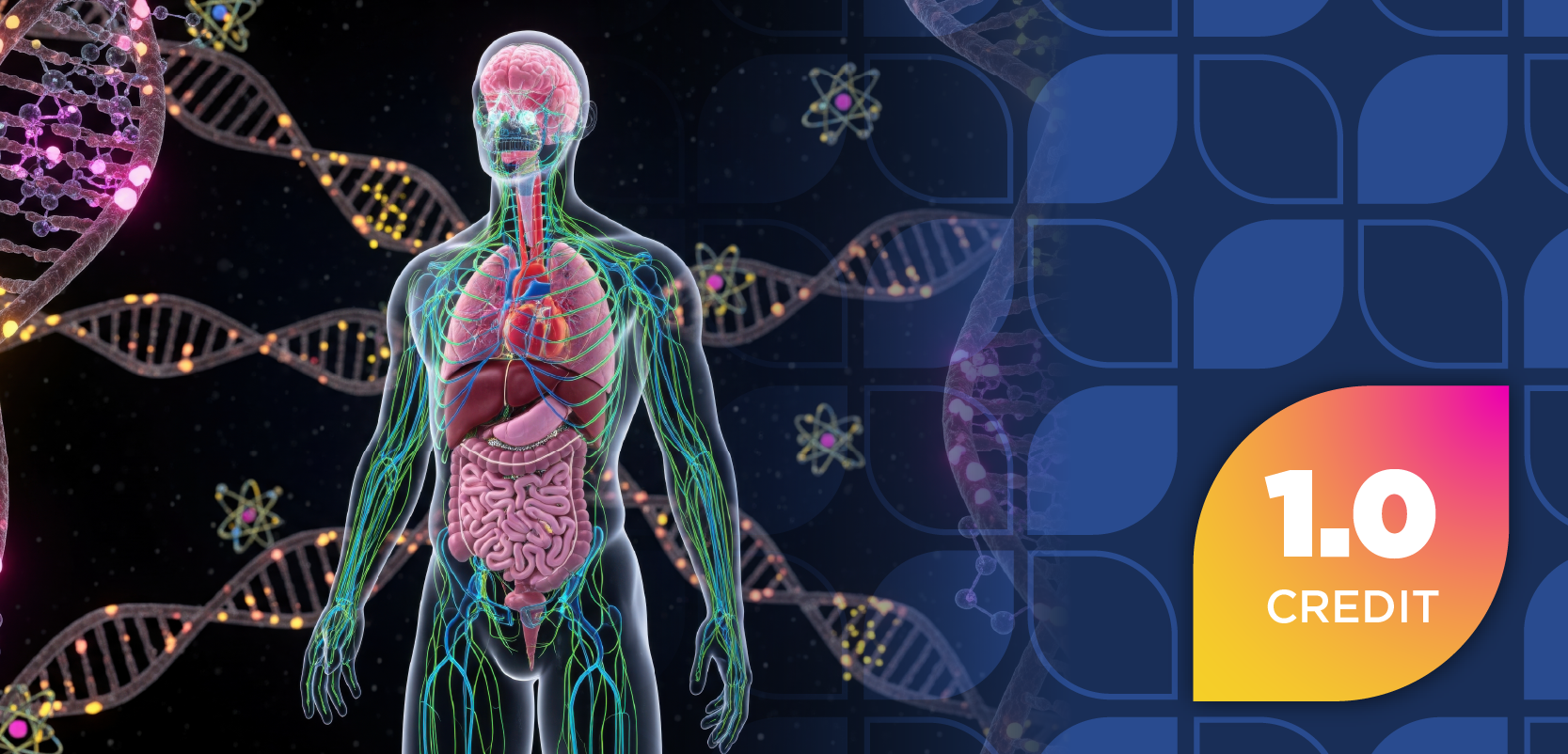Acetaminophen (Tylenol; Kenvue) is a common analgesic often taken for headaches, minor aches, and pain. It is considered generally safe to use when taken as directed, and acetaminophen is often the only recommended analgesic for infants aged 3 to 6 months and pregnant women due to health risks with nonsteroidal anti-inflammatory drugs (NSAIDS).1-3 Care must be taken to avoid overdose toxicity, which is connected to many acute liver failure cases in the US.4
Some studies query an association between acetaminophen use during pregnancy and increased risk of autism and hyperactivity.5-7 Damkier et al critically reviewed the literature and determined that the level of evidence did not warrant any changes to clinical guidelines for pain or fever treatment during pregnancy.8 Acetaminophen does cross the placenta, but it is considered safe for short-term use, as noted by over 20 years of research.9,10 Briggs et al identify acetaminophen as compatible for use during both pregnancy and lactation, which indicates that the embryo-fetal risk is very low or nonexistent.9 The American College of Obstetricians and Gynecologists continues to recommend acetaminophen for analgesia and to use in moderation at the lowest effective dose.10 Nonetheless, media attention has led many patients, pregnant women, and parents to look for natural remedies to ease their minor ailments.
The purpose of this review is not to critique or validate published literature on the potential association of acetaminophen with autism and hyperactivity, but rather to provide a concise summary of essential oils (EOs), which patients may inquire about to alleviate pain as an alternative. Because pharmacists are among the most accessible and trusted health care professionals and because of the current media attention, they are likely to field questions about substitutes for acetaminophen.11 As scientists and clinicians, we are aware that these types of natural products are not a direct replacement and can come with myriad complications, such as drug interactions, toxicity, and varied results for actual symptom relief. However, some EOs have evidentiary support and could be considered, despite not being commonly addressed in pharmacy school education.12
What Are Essential Oils?
EOs have been used in health care for centuries and continue to rise in popularity. EOs can be derived from nearly any plant matter imaginable, from flowers and roots to tree bark. One common example is willow bark, which has long been acknowledged for its pain-relieving properties due to the presence of salicin, which was important for the development of aspirin; however, that would make it contraindicated for pregnancy.13 Today, EOs are found in a variety of products, including cosmetics, food and drinks, household goods, and, more recently, pharmaceuticals.
EOs are concentrated hydrophobic liquids often steam-distilled from plant material and containing numerous aromatic compounds. They are traditionally thought of for relaxation only, but researchers are finding that EOs contain a therapeutic side. EOs contain varying amounts of volatile bioactive compounds such as terpenes and terpenoids that vary in their ability to exhibit antimicrobial, antifungal, anti-inflammatory, and anticancer activity.14 This is not surprising because the discovery of odorant receptors (ORs) extends beyond the olfactory system, and receptors have been identified throughout the body in multiple tissue types, including skin, heart, blood, lungs, intestines, and testes.15 Discovered roles include modulating cell-cell recognition, migration, proliferation, apoptosis, and more.16
Essential Oil Mechanisms of Action
Studies suggest several generalized mechanisms of action for EOs.17 For example, absorption can be via inhalation, topical application, or orally (oral not recommended in the US due to their high concentration). Inhalation is the least invasive method, where molecules bind to their single OR and stimulate the limbic system, which plays a role in emotions and memory. In turn, the brain releases endogenous physiological molecules such as serotonin and dopamine, which can alter the perception of pain and relax the body.18,19 Additionally, compounds have been shown to modulate the central nervous system (CNS) by their action on GABAergic and serotonergic receptors, which justifies their use in stress reduction, improving sleep and overall calmness.16 Emerging studies suggest that novel ORs may engage in alternative mechanisms of action, potentially triggering distinct downstream molecular signaling pathways.16 This may explain the wide variety of uses for EOs: symptom relief for pain, anxiety, nausea, skin conditions, and more.18,19
Essential Oil Selection, Storage, Safety, and Dilutions
EOs are widely popular and can be found almost anywhere, from select certified therapeutic-grade distillers to retail pharmacies and discount stores. Thus, the quality of EO products is important when choosing an EO for health benefits. Quality of the plant source, purity, time of harvest, and storage can all greatly impact the EO. Furthermore, EOs are typically marketed as cosmetic products, thus not falling under FDA drug regulations.20
When considering recommending an EO product, one should look for clear labeling, 100% purity, organic options, and a born on or best by date because EOs can undergo oxidation and must be stored in a cool location with light protection. For this reason, they should be in a blue- or amber-colored glass bottle. The best EOs also have gas chromatography-mass spectrometry testing or pharmacopeia standards.18,19
EOs are not risk-free simply because they are natural; this is important to convey to patients. Unlike pharmaceuticals, EOs are not regulated by the same rigorous standards as medications, which can cause concern about their safety. Yet, as food additives, EOs have been regulated, and a list of EOs the FDA classifies as Generally Recognized as Safe can be found in the Code of Federal Regulations (21 CFR 182.20).21 Although this can be confusing, it is wise to apply toxicological principles of dosing, route of administration, and exposure time to determine any dose-related toxicities.
EOs can cause adverse effects when applied topically, including skin irritation, allergic reactions, phototoxicity, and anaphylaxis.18,19 All citrus oils (eg, lemon, lime, sweet orange, bergamot, grapefruit) carry a risk for phototoxicity, and patients should be counseled to refrain from direct sunlight and tanning beds if applied topically. Furthermore, if a patient is allergic to almonds, it would be wise to refrain from using unrefined sweet almond oil to dilute EOs due to risk of allergic reactions and anaphylaxis.
Other EO safety issues include potential cytochrome P450 drug interactions, especially when the coadministered medication has a narrow therapeutic index.18,19 It is therefore important that the patients’ intended use, prescription drugs, and OTC medicines are all evaluated to prevent harmful interactions.
EO toxicity increases when orally ingested or improperly diluted. For reference, 1 drop of undiluted peppermint EO is equivalent to consuming 20 to 40 cups of peppermint tea; meanwhile, just 1 mL of wintergreen EO can be lethal to small children.18,19 For topical applications, dilution of EOs with a carrier oil (eg, grapeseed, jojoba, sweet almond, sunflower, or coconut oil) is recommended to minimize skin irritation. A 1% dilution is ideal for facial application in those with sensitive skin, older adults, and children older than 2 years. A 2% dilution is appropriate for general body use in adults. In the US, using undiluted EOs on the skin is not recommended due to the risk of adverse reactions. Potent EOs, such as clove, should only be used at 0.5% or lower dilutions as they are highly sensitizing. For this reason, many patients may prefer an inhalation route as opposed to topical.18,19
The online Table18,19,22 lists select essential oils with beneficial properties for mild pain and headaches.
Selected Essential Oils
EOs with potential therapeutic benefit and a greater body of research are discussed below in order of predominant use by patients. Clinical research is still limited, with the majority of studies performed on animal models. Supplementary EOs with a lack of research to support their use may be suggested for pain or headaches beyond those discussed in Table 1. However, when used appropriately for inhalation or topically as recommended with contraindications in mind, EOs that are generally recognized as safe should not lead to harm and may provide some relief for certain individuals.18,19
Peppermint: One of the key components of peppermint oil is menthol, which provides a cooling effect, relaxes smooth muscle, and enhances blood flow, thus relieving pain and reducing sensitivity when applied to the skin. Peppermint oil is known for its antispasmodic effects on smooth muscle, especially in the gastrointestinal tract, which makes it a key component in some OTC irritable bowel syndrome medications.23 Similarly, the key component of peppermint (menthol) acts upon Ca2+ smooth muscle receptors and can help alleviate tension-type headaches.24
In a randomized, double-blind crossover study, topically applied peppermint oil was as effective as 500 mg of acetaminophen for tension headaches.25 Other studies have found that peppermint oil can ease tension headaches, migraines, and headaches in general with at least some efficacy for many patients when applied topically or intranasally.26-29
Lavender: Lavender is the most frequently used EO in the field of aromatherapy and can be applied by rubbing diluted EO on the temple. Linalool and linalyl acetate are shown to have anxiolytic and mild analgesic effects.30 Some small clinical trials have found that lavender EO provided relief compared with placebo for migraine and in postdural puncture headache.31-33
Eucalyptus: Eucalyptus is rich in cineole and has traditionally been used for its anti-inflammatory properties and to improve airway function. Eucalyptus EO should be diluted and applied to affected areas to ease aching joints and neuralgia. Studies in rats have demonstrated the analgesic and anti-inflammatory effects of eucalyptus oil.34 In small human studies, inhalation of eucalyptus oil resulted in decreased pain and blood pressure after total knee replacement surgery and also decreased pain severity scores in patients with rheumatoid arthritis.35,36
Rosemary: Although there are limited studies in humans using rosemary EO, a number of studies have been performed evaluating rosemary on different rat models for pain. Rosmarinic acid, one of the active constituents of rosemary, decreased inflammation markers in rat models, demonstrating potential in neuropathic pain.37,38 Another study in rats found rosemary EOs had an analgesic effect compared with placebo.39 A nanoemulsion containing rosemary and peppermint oil reduced osteoarthritis pain in rats.40
Wintergreen: Wintergreen contains methyl salicylate, which is similar to aspirin and has analgesic and anti-inflammatory effects. Folk medicine recommends wintergreen for pain, fever, and headaches.41 However, wintergreen can be toxic when ingested, particularly during pregnancy in higher doses, and has been connected to pediatric deaths.42 Based on rodent models, methyl salicylate, the active constituent in wintergreen, has negative reproductive effects and should be avoided in pregnancy.43
Clove Oil: Clove oil has long been used in folk medicine to treat toothaches. Clove gel was found to provide better pain relief than ice or lidocaine gel prior to intraoral injection in children.44 It has primarily been studied in animal models, and a nanoemulsion gel formulated with clove oil showed some anti-inflammatory effects.45
About the Authors
Sarah M. Baltzley, MS, is laboratory instructor and externship coordinator at the Sullivan University College of Pharmacy and Health Sciences in Louisville, Kentucky.
Emily R. Esposito, PhD, is a professor of pharmaceutical sciences at the Sullivan University College of Pharmacy and Health Sciences in Louisville, Kentucky.
Conclusion
Acetaminophen remains the safest and most effective first-line analgesic for many patients, including infants and pregnant women under medical supervision. EOs, although not direct substitutes, may offer complementary relief for certain minor pain conditions as supported by emerging research. For example, peppermint oil has shown comparable efficacy to acetaminophen in managing tension headaches. Lavender oil demonstrates therapeutic benefits in stress reduction, migraine, and mild pain syndromes. EOs exert their effects through diverse mechanisms, ranging from direct modulation of pain receptors with topical use to neuromodulatory signaling via inhalation. The widespread presence of ORs throughout the body suggests their therapeutic potential may extend beyond traditional perceptions.
However, limitations remain significant. No clinical evidence supports EO use for fever management, and safety considerations are particularly important during pregnancy and in pediatric populations. Variability in product quality, dosing inconsistencies, and a lack of large-scale controlled trials further complicate their role in clinical practice. Ultimately, essential oils should be approached as adjunctive tools rather than replacements for established therapies, with their use guided by informed, balanced recommendations from pharmacists and other health professionals.
REFERENCES
1.Ziesenitz VC, Welzel T, van Dyk M, Saur P, Gorenflo M, van den Anker JN. Efficacy and safety of NSAIDs in infants: a comprehensive review of the literature of the past 20 years. Paediatr Drugs. 2022;24(6):603-655. doi:10.1007/s40272-022-00514-1
2. Li DK, Ferber JR, Odouli R, Quesenberry C. Use of nonsteroidal antiinflammatory drugs during pregnancy and the risk of miscarriage. Am J Obstet Gynecol. 2018;219(3):275.e1-275.e8. doi:10.1016/j.ajog.2018.06.002
3. Antonucci R, Zaffanello M, Puxeddu E, et al. Use of non-steroidal anti-inflammatory drugs in pregnancy: impact on the fetus and newborn. Curr Drug Metab. 2012;13(4):474-490. doi:10.2174/138920012800166607
4. Orandi BJ, McLeod MC, MacLennan PA, et al; US Acute Liver Failure Study Group. Association of FDA mandate limiting acetaminophen (paracetamol) in prescription combination opioid products and subsequent hospitalizations and acute liver failure. JAMA. 2023;329(9):735–744. doi:10.1001/jama.2023.1080
5. Prada D, Ritz B, Bauer AZ, Baccarelli AA. Evaluation of the evidence on acetaminophen use and neurodevelopmental disorders using the Navigation Guide methodology. Environ Health. 2025;24(1):56. doi:10.1186/s12940-025-01208-0
6. Ahlqvist VH, Sjöqvist H, Dalman C, et al. Acetaminophen use during pregnancy and children’s risk of autism, ADHD, and intellectual disability. JAMA. 2024;331(14):1205–1214. doi:10.1001/jama.2024.3172
7. Liew Z, Ritz B, Rebordosa C, Lee PC, Olsen J. Acetaminophen use during pregnancy, behavioral problems, and hyperkinetic disorders. JAMA Pediatr. 2014;168(4):313-320. doi:10.1001/jamapediatrics.2013.4914
8. Damkier P, Gram EB, Ceulemans M, et al. Acetaminophen in pregnancy and attention-deficit and hyperactivity disorder and autism spectrum disorder. Obstet Gynecol. 2025;145(2):168-176. doi:10.1097/AOG.0000000000005802
9. Briggs GG, Towers CV, Forinash AB. Briggs Drugs in Pregnancy and Lactation: A Reference Guide to Fetal and Neonatal Risk, 12e. Lippincott Williams & Wilkins; 2022. Accessed September 24, 2025. https://apn.lwwhealthlibrary.com/book.aspx?bookid=3077§ionid=0
11. Kwan D, Boon HS, Hirschkorn K, et al. Exploring consumer and pharmacist views on the professional role of the pharmacist with respect to natural health products: a study of focus groups. BMC Complement Altern Med. 2008;8:40. doi:10.1186/1472-6882-8-40
12. Esposito ER, Bystrek MV, Klein JS. An elective course in aromatherapy science. Am J Pharm Educ. 2014;78(4):79. doi:10.5688/ajpe78479
13. Norn S, Permin H, Kruse PR, Kruse E. Fra pilebark til acetylsalicylsyre [From willow bark to acetylsalicylic acid]. Article in Danish. Dan Medicinhist Arbog. 2009;37:79-98.
14. Masyita A, Mustika Sari R, Dwi Astuti A, et al. Terpenes and terpenoids as main bioactive compounds of essential oils, their roles in human health and potential application as natural food preservatives. Food Chem X. 2022;13:100217. doi:10.1016/j.fochx.2022.100217
16. Maßberg D, Hatt H. Human olfactory receptors: novel cellular functions outside of the nose. Physiol Rev. 2018;98(3):1739-1763. doi:10.1152/physrev.00013.2017
17. Saad NY, Muller CD, Lobstein A. Major bioactivities and mechanisms of action of essential oils and their components. Flavour Fragr J. 2013;28(5):269-279. doi:10.1002/ffj.3165
18. Lis-Balchin M. Aromatherapy Science: A Guide for Healthcare Professionals. Pharmaceutical Press; 2006.
19. Price S, Price L. Aromatherapy for Health Professionals. Churchill Livingstone; 2012.
23. Cash BD, Epstein MS, Shah SM. A novel delivery system of peppermint oil is an effective therapy for irritable bowel syndrome symptoms. Dig Dis Sci. 2016;61(2):560-571. doi:10.1007/s10620-015-3858-7
24. Hawthorn M, Ferrante J, Luchowski E, Rutledge A, Wei XY, Triggle DJ. The actions of peppermint oil and menthol on calcium channel dependent processes in intestinal, neuronal and cardiac preparations. Aliment Pharmacol Ther. 1988;2(2):101–118. doi:10.1111/j.1365-2036.1988.tb00677.x
25. Göbel H, Fresenius J, Heinze A, Dworschak M, Soyka D. Effectiveness of oleum menthae piperitae and paracetamol in therapy of headache of the tension type. Article in German. Nervenarzt. 1996;67(8):672–681. doi:10.1007/s001150050040
26. Bhardwaj N, Chavez M, Fleeks J, Ondari A, Payne S. Does peppermint essential oil relieve headache pain in adults with tension headaches? Evidence-Based Practice. 2023;26(1):16-17. doi:10.1097/EBP.0000000000001522
27. Göbel H, Heinze A, Heinze-Kuhn K, Göbel A, Göbel C. Peppermint oil in the acute treatment of tension-type headache. Article in German. Schmerz. 2016;30(3):295-310. doi:10.1007/s00482-016-0109-6.
28. Shah Y, Spoo M, Jeitler M, et al. Efficacy and safety of an ethanolic solution of peppermint oil for patients with episodic tension type headache: EUMINZ, a randomized controlled trial. Zeitschrift für Phytotherapie. 2017:38(S01):S1-S44. doi:10.1055/s-0037-1607119
29. Rafieian-Kopaei M, Hasanpour-Dehkordi A, Lorigooini Z, Deris F, Solati K, Mahdiyeh F. Comparing the effect of intranasal lidocaine 4% with peppermint essential oil drop 1.5% on migraine attacks: a double-blind clinical trial. Int J Prev Med. 2019;10:121. doi:10.4103/ijpvm.IJPVM_530_17
30. Alqahtani A, Abdelhameed MF, Abdou R, et al. Mechanistic action of linalyl acetate: acyclic monoterpene isolated from bitter orange leaf as anti-inflammatory, analgesic, antipyretic agent: role of TNF-α, IL1β, PGE2, and COX-2. Ind Crops Prod. 2023;203:117131. doi:10.1016/j.indcrop.2023.117131
31. Sasannejad P, Saeedi M, Shoeibi A, Gorji A, Abbasi M, Foroughipour M. Lavender essential oil in the treatment of migraine headache: a placebo-controlled clinical trial. Eur Neurol. 2012;67(5):288-291. doi:10.1159/000335249
32. Rafie S, Namjoyan F, Golfakhrabadi F, Yousefbeyk F, Hassanzadeh A. Effect of lavender essential oil as a prophylactic therapy for migraine: a randomized controlled clinical trial. J Herb Med. 2016;6(1):18-23. doi:10.1016/j.hermed.2016.01.003
33. Nasiri M, Asayesh H, Yousefi Khosroabadi Z, Hosseini Amiri M, Bahadori H, Rajaee M. Effects of aromatherapy with lavender (Lavandula angustifolia MILL) on post-dural puncture headache: a randomized placebo-controlled trial. Altern Ther Health Med. 2022;28(5):12-19.
34. Mondal M, Quispe C, Sarkar C, et al. Analgesic and anti-inflammatory potential of essential oil of Eucalyptus camaldulensis leaf: in vivo and in silico studies. Natural Product Communications. 2021:16(4). doi:10.1177/1934578X211007634
35. Jun YS, Kang P, Min SS, Lee JM, Kim HK, Seol GH. Effect of eucalyptus oil inhalation on pain and inflammatory responses after total knee replacement: a randomized clinical trial. Evid Based Complement Alternat Med. 2013;2013:502727. doi:10.1155/2013/502727
36. Varkaneh ZK, Karampourian A, Oshvandi K, Basiri Z, Mohammadi Y. The effect of eucalyptus inhalation on pain and the quality of life in rheumatoid arthritis. Contemp Clin Trials Commun. 2022;29:100976. doi:10.1016/j.conctc.2022.100976
37. Ghasemzadeh Rahbardar M, Amin B, Mehri S, Mirnajafi-Zadeh SJ, Hosseinzadeh H. Anti-inflammatory effects of ethanolic extract of Rosmarinus officinalis L. and rosmarinic acid in a rat model of neuropathic pain. Biomed Pharmacother. 2017;86:441-449. doi:10.1016/j.biopha.2016.12.049
38. Rahbardar MG, Amin B, Mehri S, Mirnajafi-Zadeh SJ, Hosseinzadeh H. Rosmarinic acid attenuates development and existing pain in a rat model of neuropathic pain: an evidence of anti-oxidative and anti-inflammatory effects. Phytomedicine. 2018;40:59-67. doi:10.1016/j.phymed.2018.01.001
39. Raskovic A, Milanovic I, Pavlovic N, Milijasevic B, Ubavic M, Mikov M. Analgesic effects of rosemary essential oil and its interactions with codeine and paracetamol in mice. Eur Rev Med Pharmacol Sci. 2015;19(1):165-172.
40. Mohammadifar M, Aarabi MH, Aghighi F, et al. Anti-osteoarthritis potential of peppermint and rosemary essential oils in a nanoemulsion form: behavioral, biochemical, and histopathological evidence. BMC Complement Med Ther. 2021;21(1):57. doi:10.1186/s12906-021-03236-y
41. Michel P, Olszewska MA. Phytochemistry and biological profile of Gaultheria procumbens L. and wintergreen essential oil: from traditional application to molecular mechanisms and therapeutic targets. Int J Mol Sci. 2024;25(1):565. doi:10.3390/ijms25010565
42. Davis JE. Are one or two dangerous? Methyl salicylate exposure in toddlers. J Emerg Med. 2007;32(1):63-69. doi:10.1016/j.jemermed.2006.08.009
43. Greene T, Rogers S, Franzen A, Gentry R. A critical review of the literature to conduct a toxicity assessment for oral exposure to methyl salicylate. Crit Rev Toxicol. 2017;47(2):98-120. doi:10.1080/10408444.2016.1236071
44. Esmaeili F, Zahmatkeshan M, Yousefpoor Y, Alipanah H, Safari E, Osanloo M. Anti-inflammatory and anti-nociceptive effects of cinnamon and clove essential oils nanogels: an in vivo study. BMC Complement Med Therap. 2022;22(1):143. doi:10.1186/s12906-022-03619-9
45. Havale R, Rao DG, Shrutha SP, et al. Comparative evaluation of pain perception following topical application of clove oil, betel leaf extract, lignocaine gel, and ice prior to intraoral injection in children aged 6-10 years: a randomized control study. J Dent Anesth Pain Med. 2021;21(4):329-336. doi:10.17245/jdapm.2021.21.4.329



























































































































































































































